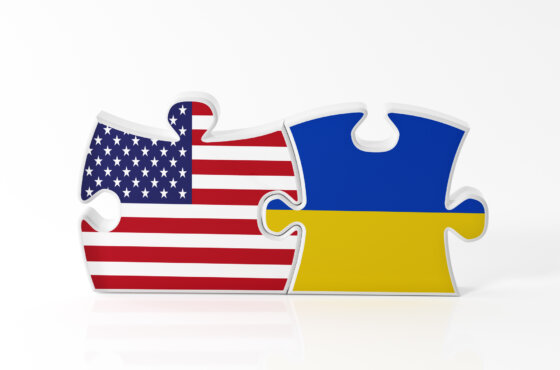Lithuania is switching to American gas. Why is it important
The US is going to start exporting gas to Europe, and not sometime in many years, but already in February of the 2016 year. The first tankers, according to unofficial data, will take the port of Klaipeda. The appearance of "overseas" gas in the former Soviet Union means that Gazprom will have a hard time: its influence on the region will decline, and Russia will no longer be able to use gas as a political weapon. "Medusa" tells how it happened.
As it was before
Gas is a very difficult product in terms of transportation, the price of its delivery is higher than the price of production. During Soviet times, several powerful gas pipelines to Europe were built, which are still used today; Over the past 25 years, Nord Stream and Yamal-Europe have been added to them. These pipelines “tied up” suppliers with consumers: the latter turned out to be highly dependent on Russia.
The European authorities did not like this, but for a long time they could not do anything: the ideas of building gas pipelines bypassing Russia were discussed for many years, but resulted in nothing. New gas pipelines are expensive, and, most importantly, unreliable: it turned out to be difficult to come to an agreement with Turkmenistan, Azerbaijan, Iran and other potential gas producers.
As a result, in 2014, Gazprom provided more than 30 percent of Europe’s gas needs. Some countries depend on supplies from Russia completely, and this makes Gazprom a powerful political weapon in the hands of the Kremlin. The Russian authorities pretend that Gazprom is pursuing exclusively economic interests in Europe, but in fact they almost do not hide the fact that they are using gas for political purposes. Suffice it to say that in 2010, the decision on a gas discount for Ukraine was made in conjunction with the conditions of deployment of the Black Sea Fleet in Crimea (now the agreement is denounced). For a long time, the same Lithuania paid for gas most of all in Europe and much more than neighboring Latvia and Estonia - and not because of the fact that delivering gas there is much more expensive, but simply because of bad relations with Gazprom.
Like now
For several years now, the EU authorities have been calling on different countries to solve the problem of dependence on Russia not by using new gas pipelines, but by liquefying gas. The idea is to liquefy gas, “load” it into tankers, send it from anywhere in the world to Europe, “liquefy” it and deliver it to consumers via gas pipelines.
Gas liquefaction is the only reasonable alternative to gas pipelines. Already, Qatar, Australia, Nigeria and other producing countries have learned to export gas by sea. They could increase supplies if there were gas terminals everywhere, but in Europe there are still big problems with this. The construction of terminals and their maintenance are expensive, they require huge storage facilities, which also need to be built. We still need new gas pipelines or at least the conversion of old ones.
All these expenses make sense if there is confidence that a lot of gas will be needed in the near future, and its prices will be high. There is no such confidence in Europe: the EU has been balancing on the brink of recession for many years, gas and oil here are quite successfully replaced by "green" energy.
In general, it turned out that Lithuania became almost the only EU country that decided to build a gas liquefaction terminal. It was completed by the end of 2014 of the year and had already begun to receive gas from Norway (a gas storage vessel was also leased there). True, its power is still small, but the costs, on the contrary, are high, but the Lithuanians do not lose heart. In October, they completed the Klaipeda-Kursenai gas pipeline, which will allow Lithuania to export gas to Latvia, Estonia, and in the future - to Poland and Belarus. All these countries have been considered “Gazprom” for many years, so this is a direct attack on Russia's position in the region.
How will be in the near future
Even if we imagine that, with the help of supplies from Norway and the United States, Lithuania will cover all Baltic gas needs, Gazprom will not suffer great financial damage. In the 2014 year, Gazprom sent 16 times less gas to Lithuania than Germany, 40 times less than Latvia, 101 times less than Estonia. These are scanty volumes on the scale of Gazprom, but in this case it is not the economic losses that are important, but the precedent.
The US has only in recent years invested about 60 billions of dollars in gas export infrastructure. Australia, Qatar and other manufacturers are sharply trying to increase the export of liquefied fuel. Now gas from the same Qatar goes mainly to Asia, but Europe is one of the key regions for all producers. Together they will put pressure on the EU so that more LNG terminals will appear.
This means that in the near future, Gazprom will have many unexpected competitors. Consequently, the share of Gazprom in the European market will decline, and he will be forced to give discounts to consumers. This is bad news both for Gazprom itself (selling gas to Europe brings the company the most revenue; it is much more profitable than selling gas inside the country), and for the entire Russian economy. Gazprom is one of the main taxpayers in the country, and oil and gas revenues account for about half of the federal budget.
Forum previously reported that the United States banned to deliver equipment at the Gazprom field. “The Bureau of Industry and Security adds the Russian oil and gas field, the Yuzhno-Kirinskoye field, which is located in the Sea of Okhotsk, to the list of enterprises for which sanctions have been imposed,” the decision says.
Subscribe to ForumDaily on Google News










